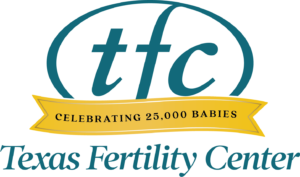
Intravaginal embryo culture in San Antonio. Is it ready for “prime time”?
Please note that, while we would prefer to use the name of the device and the manufacturer in this article – just as we do for all other products we refer to throughout our website – we received a letter from the attorney for the manufacturer telling us that we cannot use either the name of their product or the name of the company that makes it.
The FDA recently cleared a new device that allows the egg and sperm from an in vitro fertilization (IVF) cycle to be kept in a woman’s body, rather than a laboratory, while the embryos grow and divide. Are you wondering whether this new device is right for you? Our fertility specialists will explain what you need to know about this new intravaginal embryo culture system in San Antonio.
The idea for an intravaginal embryo culture system is not new.
In fact, it has been around since the 1980s. Unfortunately, the design of the state-of-the-art system at that time was not able to mimic the careful acid/base balance, air concentrations and sterile conditions that are present in the fallopian tubes and uterus – and carefully monitored in the IVF laboratory.
The latest iteration of this device received FDA clearance in 2015 for holding and preparing up to seven eggs with sperm for up to 72 hours. The theory in support of this concept is that fertilization and early embryonic development will occur in the woman’s body, eliminating the need (and potential cost) for intensive IVF laboratory procedures and monitoring. Some women and couples have heard about these devices and they want to know more about the use of intravaginal embryo culture in San Antonio.
Advantages and disadvantages
When patients visit our fertility specialists with questions about intravaginal embryo culture in San Antonio, our physicians take time to explain the advantages and disadvantages of these devices.
Intravaginal embryo culture has theoretic advantages for women in certain situations.
- Women who need IVF but live in underdeveloped regions or nations where IVF laboratories are not available or financially accessible
- Women who do not expect to retrieve many eggs during their stimulation
- Women who have cultural or religious reasons why eggs and sperm must remain in the body during the IVF process
While intravaginal embryo culture has some advantages, these devices also have some notable disadvantages:
Published studies about the commercially available intravaginal embryo culture devices have not been carried out in women and couples with many common types of fertility issues, including severe endometriosis, polycystic ovary syndrome, diminished ovarian reserve and severe male factor infertility. Excluding patients with real-world infertility conditions, such as those requiring ICSI, may bias the results for these devices, making them appear more successful than they actually may be.
For women developing many eggs or planning a Day 5 transfer, not all embryos can complete their growth in the intravaginal embryo culture device. As a result, embryos may need to develop in two environments, both in the device and in the laboratory, resulting in additional costs.
Some women may be uncomfortable with the plastic devices or silicone retention diaphragms. Although normal activities should not cause a problem, the intravaginal embryo culture devices are not a good choice for women who worry that their daily activities could cause issues with the proper environment necessary for embryo development.
Important information about embryo growth is lost. Our fertility specialists can learn a great deal about the causes of a couple’s infertility if they see poor fertilization or delays in embryo growth. This information is unattainable with vaginal culture. Our laboratory specialists routinely use this information to track embryos with the best “on-time” growth to optimize embryo selection when it comes time for embryo transfer in order to improve pregnancy rates.
Embryo development is better and pregnancy rates are higher with traditional laboratory-based systems than with intravaginal embryo culture devices.
Evidence-based medicine with a personal touch
At Texas Fertility Center, we strive to always incorporate evidence-based medicine in our personalized approach to our patient treatment and care. In this case, we do not believe that currently available data support a conclusion that intravaginal embryo culture devices are ready for prime time for the majority of patients, although they may be reasonable in isolated situations.
Contact our fertility specialists to learn more about IVF with intravaginal embryo culture in San Antonio and what fertility treatments are best for you. Our Austin and San Antonio physicians are ready to help you move forward on the path to parenthood.


